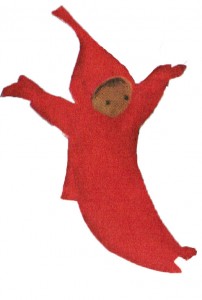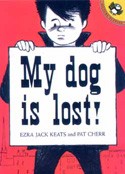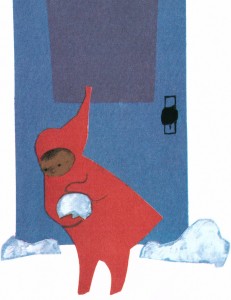Excerpted from the blog American Studies (americanstudier.blogspot.com), by Ben Railton, a professor at Fitchburg State University, in Massachusetts.
“…I’m not sure any American children’s author is more tribute-worthy than Ezra Jack Keats (1916-1983).”

 Keats’ early life and career read like a newsreel of American culture and identity in the early 20th century: born in Brooklyn to Polish American immigrants, he won a nationwide artistic contest in high school with a Depression-era painting of the unemployed; after graduation he went to work for Roosevelt’s Works Progress Administration (WPA) as a mural painter, then turned to providing illustrations for the exploding new comic books industry; he served in the army during World War II, designing camouflage; spent a year in Paris, where he produced many paintings that were later exhibited there and in the States; and then returned to America to illustrate many of the era’s most prominent magazines, including Reader’s Digest and Playboy. His first jobs as a children’s book illustrator were just another facet of this expanding career—in fact he was offered the first such job after a publisher saw another illustration of his—and as of the end of the 1950s, despite the clear facts of his artistic talent and resume, there was no apparent evidence that Keats had anything especially unique to offer the world of American children’s literature.
Keats’ early life and career read like a newsreel of American culture and identity in the early 20th century: born in Brooklyn to Polish American immigrants, he won a nationwide artistic contest in high school with a Depression-era painting of the unemployed; after graduation he went to work for Roosevelt’s Works Progress Administration (WPA) as a mural painter, then turned to providing illustrations for the exploding new comic books industry; he served in the army during World War II, designing camouflage; spent a year in Paris, where he produced many paintings that were later exhibited there and in the States; and then returned to America to illustrate many of the era’s most prominent magazines, including Reader’s Digest and Playboy. His first jobs as a children’s book illustrator were just another facet of this expanding career—in fact he was offered the first such job after a publisher saw another illustration of his—and as of the end of the 1950s, despite the clear facts of his artistic talent and resume, there was no apparent evidence that Keats had anything especially unique to offer the world of American children’s literature.
 Keats’ first authored as well as illustrated children’s book, My Dog is Lost (1960), instantly proved that perception false. The book featured as its protagonist a young Puerto Rican boy, a recent immigrant who speaks only Spanish, as he travels New York City in search of his lost dog; during his journey he meets numerous other city dwellers and communities. My Dog’s introduction of a multicultural and multiethnic urban world, without sacrificing a bit of story or beauty or audience appeal, set the stage for a long career in which Keats continued to strike that balance, most especially in the many books featuring the African-American protagonist Peter; introduced in 1963’s Caldecott-winning The Snowy Day, Peter would reappear in many more books and grow from a young boy to a teenager on New York’s streets.
Keats’ first authored as well as illustrated children’s book, My Dog is Lost (1960), instantly proved that perception false. The book featured as its protagonist a young Puerto Rican boy, a recent immigrant who speaks only Spanish, as he travels New York City in search of his lost dog; during his journey he meets numerous other city dwellers and communities. My Dog’s introduction of a multicultural and multiethnic urban world, without sacrificing a bit of story or beauty or audience appeal, set the stage for a long career in which Keats continued to strike that balance, most especially in the many books featuring the African-American protagonist Peter; introduced in 1963’s Caldecott-winning The Snowy Day, Peter would reappear in many more books and grow from a young boy to a teenager on New York’s streets.

His world and experiences and stories were recognizably specific to his race and urban setting and time period, but were also always universal and human and full of the wonder and mystery and humor that defines the best children’s books. More than, I believe, any other single American author (in any genre), Keats helped bring the nation’s burgeoning post-1960 multicultural identity into the mainstream, not with polemics or arguments, but with beautiful illustrations and engaging stories of city life and childhood.
My boys don’t like The Snowy Day any more than they like many other favorites, but that’s precisely my point—it’s one great children’s book among many, yet one that stands out (in its own era and to an extent even in ours) for the community and world it creates. Well worth a tribute, I’d say.
